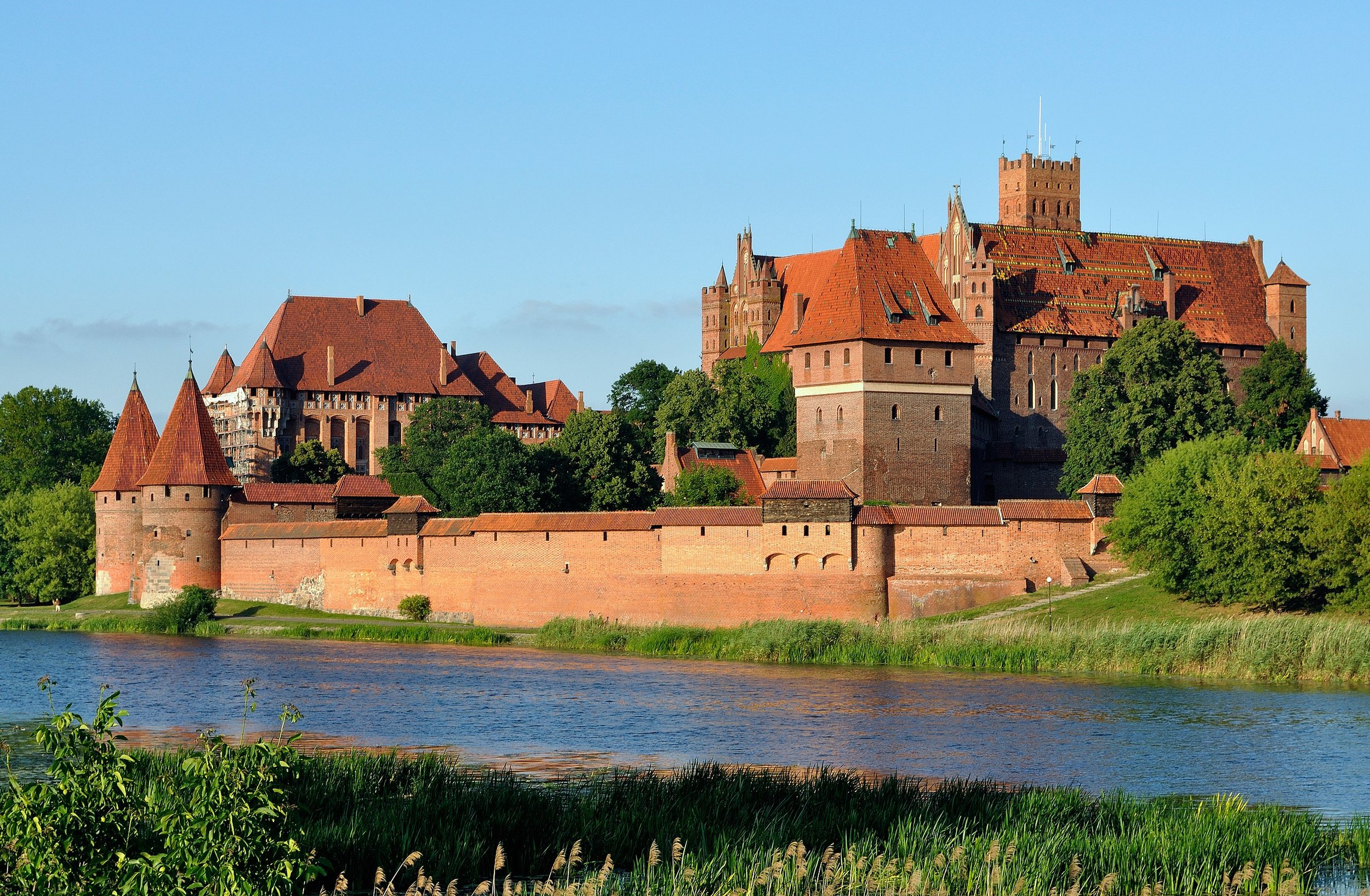
Poland
Polish bollards have a red strip that wraps all the way around the bollard. This strip has a red reflector on the front (sometimes hard to see), and a white reflector on the back. Bollards sometimes have numbers on them.
NOTE: The same design can be found in Zakarpattia Oblast in Ukraine.
Poland usually has thin concrete utility poles with see-through holes. They are commonly known as “holey poles”. The holes often do not extend all the way to the bottom of the pole.
Sometimes, two poles are joined together, or put in an A-frame shape. You can also find round concrete poles.
NOTE: Hungary and Romania also have holey poles, but these are wider and more bulky. In addition, the holes extend all the way to the bottom.
Poland has square (normal B-type) guardrails, with circular red reflectors.
NOTE: Poland is one of only a very few European countries with this type of guardrail. For a good overview of European guardrails, see this infographic.
Polish is a Slavic language. In contrast to other slavic languages, the Polish alphabet includes:
Ł with a stroke through it (unique to Polish)
Ą and Ę with a small hook (also found in Lithuanian)
Ć, Ń, Ó, Ś, Ź with an acute accent. Of these, Ń is unique to Polish. In addition, the only other language with Ś and Ź is Montenegrin.
Ż with a small dot (unique to Polish)
Polish is very consonant-heavy, with lots of consonant clusters. Polish does not use V. Instead, it uses W a lot, the only Slavic language to do so. Other unusually common consonants are the Z, K, and C.
Neatly tiled sidewalks are very common in Poland. Tiles are often grey or light red. Occasionally, even roads have tiled pavement. Many different types of tile patterns occur, including larger square tiles.
Polish architecture is fairly similar to other Central European countries. Buildings usually have plain stone walls covered in light or pastel stucco. Frequent roofing colours are orange or red, black, and brown. Roof tiles and panes often have a tidy, almost plastic-like look. Some rural houses have corrugated sheet roofs similar to those often found in the Baltics.
Detached single family homes are common throughout Poland. They sometimes have a blocky look.
In bigger towns, apartment buildings are common. Many date from communist times, and some of them still have a somewhat austere look. However, many have been renovated and look nice and well-kept.
Downtown areas are usually dense and often have historic buildings.
Poland is one of the most Catholic countries in Europe. You can often find Christian shrines on the side of roads. Blue-white and yellow-white Polish Catholic flags also sometimes appear.
Regional roads have 3-digit road numbers. These numbers often appear in yellow boxes on direction signs. The first digit is usually region-specific, as there is a high level of geographic clustering of these road numbers.
There is some overlap between numbers near the margins of the regions. Some exceptions also exist.
NOTE: This tip only applies to 3-digit roads. Bigger roads with 2-digit road numbers mostly do not adhere to this geographic pattern.
Polish landline phone numbers have 9 digits. The first 2 digits are the area code. These area codes are distributed in a sensible manner across the country. Even just learning the first digit of the area codes can greatly narrow down the region. You can click on the infographic to enlarge it.
NOTE: Mobile numbers also have 9 digits, but luckily there is no overlap between the first two digits of mobile numbers and landlines.
When it comes to Polish place names, the -owo ending is mostly limited to the northern half of the country, and the -ów ending mostly to the southern half. You may also encounter -ino or -yno, mainly in the northwest, and -ew near the centre of the country.
NOTE: A good way to remember this is that Kraków is in the south of Poland, and most other towns ending in -ów are too.
While rare, bilingual signs can be found in the highlighted regions.
Kashubian, found in the north, is another West Slavic Language, featuring a lot of umlauts and accents.
Wszëtczi lëdze rodzą sã wòlny ë równy w swòji czëstnoce ë swòjich prawach. Mają òni dostóne rozëm ë sëmienié ë nôlégô jima pòstãpòwac wobec drëdzich w dëchù bracënotë.
German is mostly found in the Opole Voivodeship.
Lithuanian can be found around Puńsk, near the Lithuanian border.
Belarusian is found near the Belarusian border.
Lemko, another Cyrillic language, can be found in the southeast.
GeoGuessr’s own official maps are not very good, for a variety of reasons. Plonk It recommends the following maps instead:
A Balanced Poland (map link) - A well-balanced, computer-generated map with 50,000 locations across Poland. Designed for No Moving games
IntersectionGuessr - Poland (map link)- This computer-generated map has 101413 locations across Poland. Most locations will be on intersections, making the map ideal for moving games.
In addition, here are some resources to help you practise Poland:
Plonk It Poland (map link) - This map contains locations for practising each meta in the Plonk It Poland guide from step 2 to 3.
Poland Area Codes (map link) - Practise the Polish area codes by playing this map by IcyTown665.
Poland Biggest Cities Quiz (quiz link) - Learn where the biggest Polish cities are using this quiz.






























